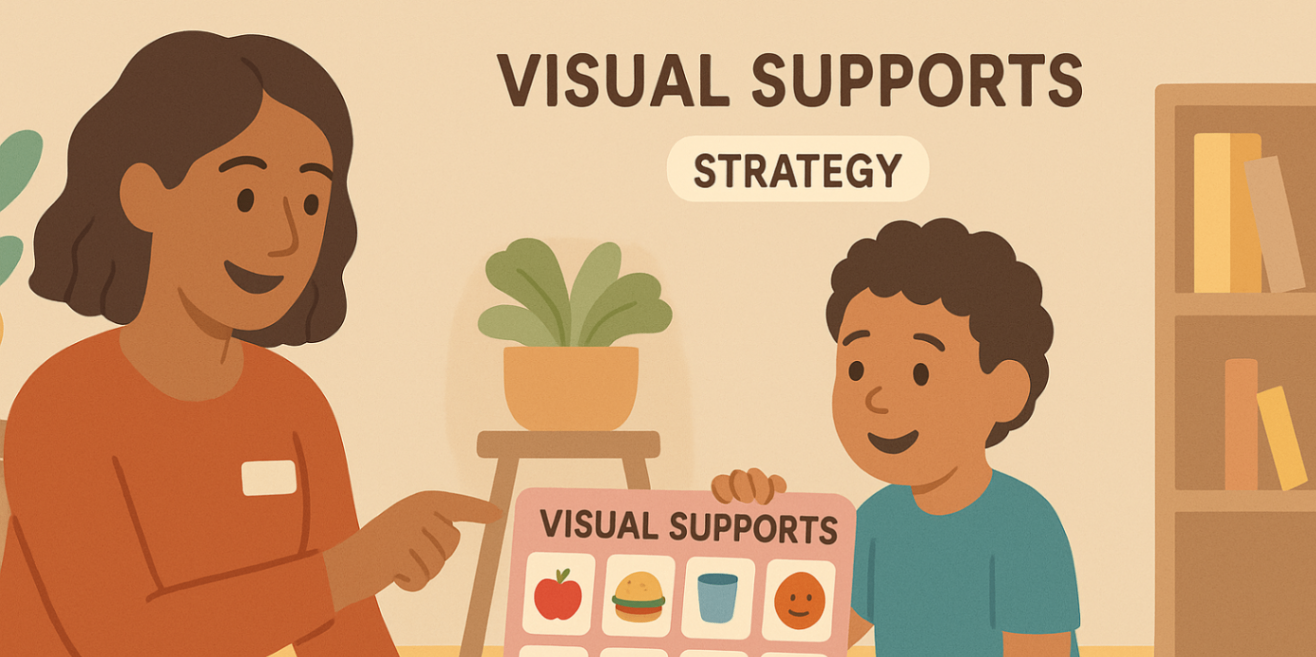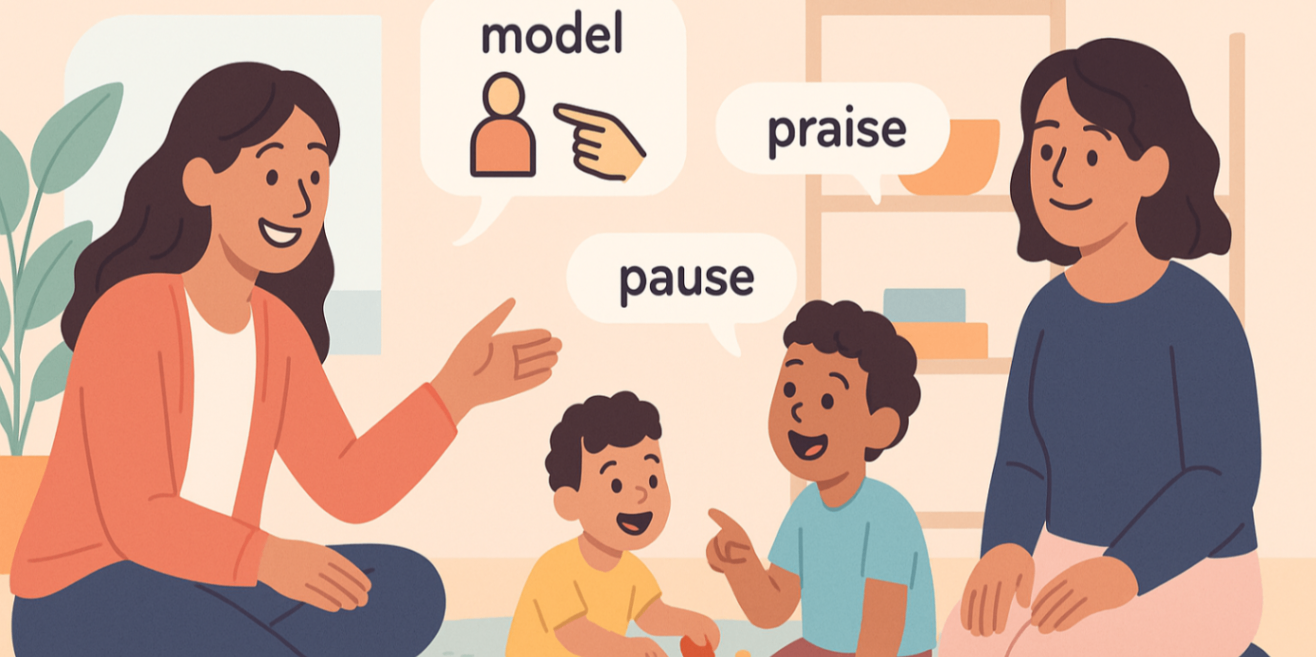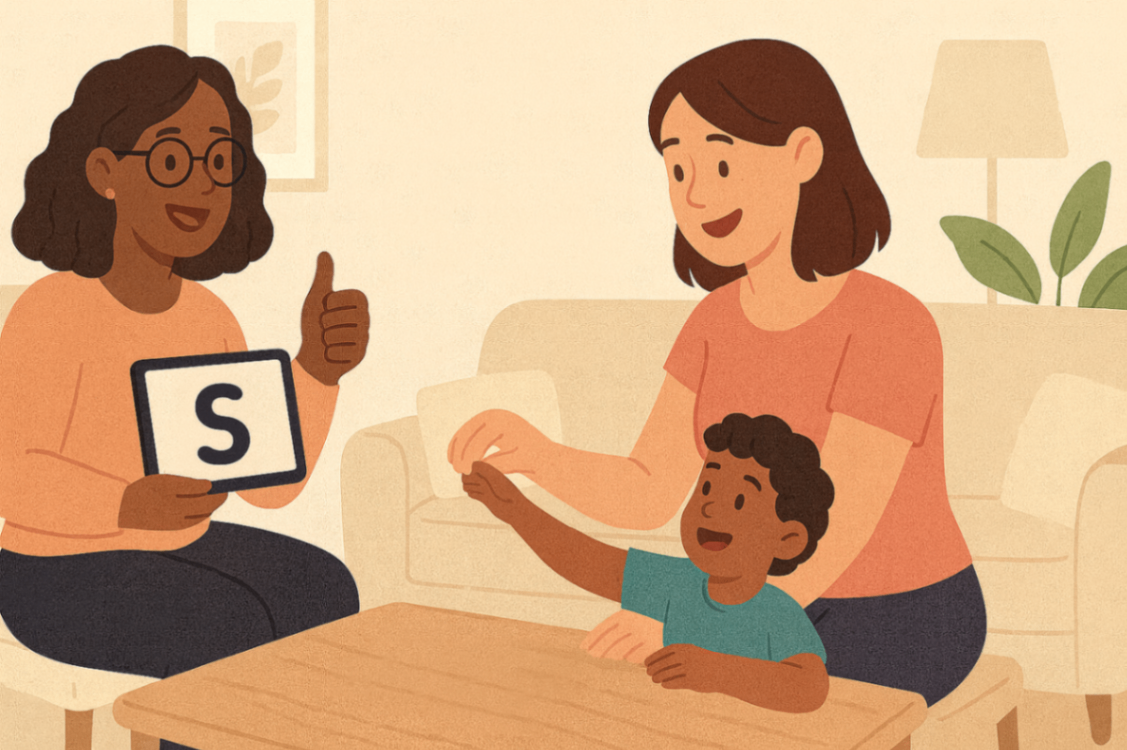
top speech therapy for autism strategies and techniques
15 August, 2025
Key Highlights
-
Speech therapy for the autism spectrum helps young children grow their communication skills. Children can do this with words or without words.
-
When speech therapy starts early with treatment plans made for each child, it can help young children move past symptoms of autism. This makes them better at social communication.
-
Play-based therapy, AAC systems, and positive reinforcement are good ways to help with language development.
-
A speech therapist gives treatment plans that fit each child. This helps them at home, at school, or in other places.
-
Parents, schools, and other experts work as one team. This supports young children to get better at social communication and feel good in their lives.
-
Using good ideas that work, and helping children feel safe and know what will happen, helps speech therapy do its job for young children with autism spectrum.
Introduction
The journey to better communication for children on the autism spectrum starts with knowing what they need. Language development is often hard for them. They may have trouble with social communication and feel it is tough to read social cues. Early intervention and speech therapy can help a lot with this. These ways focus on both using spoken words and on things like facial expressions or gestures. This can help autistic children feel good in social interactions. Their communication skills get better and stronger as time goes on. This growth gives them a better quality of life.
Understanding communication challenges in autism

People who are on the autism spectrum can face some communication challenges. These challenges can make it hard for them to talk with others and take part in social interactions. Language delays may make some people struggle with using words or understanding social cues. Because of this, it can feel hard to be in social situations, and it may cause them to feel upset.
If children are nonverbal, they do not say their thoughts and feelings out loud. They might use other ways to talk, such as sign language or picture cards. To help them do well, it is important to give the right support and different ways so each person can reach their individual goals. A good therapy space can help with this and let them learn and grow in their own time.
Common Speech and Language Challenges in Children with autism
Children on the autism spectrum often have trouble with speech and language. These issues can get in the way of how they talk with other people. A lot of kids can struggle with verbal communication. There may not be enough words, or there are language delays. That means it can be hard for them to say what they feel or what they want.
Kids on the autism spectrum may also find it hard to use nonverbal ways to talk. Many of them do not make much eye contact, use body language, or show facial expressions. Because of all these, social interactions are harder for them. It can take away from their quality of life.
It is key to start early intervention and use good therapy techniques. These help grow their social communication skills and make their lives better.
How Autism Impacts Verbal and Nonverbal Skills
Children on the autism spectrum can have trouble with talking and not talking skills. There may be language delays. Some kids can struggle with social communication. This includes things like facial expressions and body language. They can also find eye contact and gestures hard to get. All these things make social interactions tough for them. These problems with social communication and language can stop them from having good conversations. So, there needs to be special help and therapies for them. This can help their communication skills and help them feel good in different places.
How Speech Therapy Can Enhance the Lives of Children on the Autistic Spectrum

A speech therapy program made for autistic children can help make their lives better. This kind of therapy supports children with their own communication challenges. In therapy sessions, they set individual goals and use things like visual supports, social stories, and positive reinforcement. The focus on language development in speech therapy helps young children learn new ways to talk.
With these strategies, young children start to get better at verbal communication. They learn social communication, which helps them talk and play with other kids. This makes it easier for them to feel included at school and with friends. Using these methods, children get new ways to talk with people and feel more at ease.
After some time, speech therapy can help with brain development and social skills. It gives young children what they need to feel good in their world and makes them feel seen and heard. A speech therapy program that focuses on the child’s needs helps their communication skills grow in several ways.
How Speech Therapy Improves Communication
Therapy sessions focus on helping autistic children build strong communication skills. When started with young children, early intervention finds ways to make both talking and nonverbal actions better, like eye contact and body language. Tools such as picture exchange and visual supports help kids show others what they need. This makes it easier for people to understand them and also helps with social interactions. Speech therapists use positive reinforcement to help kids feel good about themselves. It helps them feel ready for different social events. Step by step, these changes improve the quality of life for autistic children. Over time, their lives get better.
Key Goals of Speech Therapy for Autistic Children
Improving communication skills is the main goal in speech therapy for autistic children. The therapist works with young children to help them with talking and other ways of sharing, that include using body language and facial expressions. It is important for young children to read social cues and have good social interactions. Every child gets their own treatment plan. Therapists use visual supports and alternative communication methods, like picture exchange, to help with language development. When autistic children meet their individual goals, it can make life better for them and their families.
Principles of evidence-based speech therapy for autism
Speech therapy uses methods that have been proven to work. This helps the treatment plans fit what each child needs. Every child can be different in how they communicate, so the plan will be made for only them. Tools, like visual supports and pivotal response training, help each child develop language skills. They also let children do better with social communication with others.
People who work with the child often check how well things are going. If the plan does not help as it should, they change it. This makes sure each child has a chance to do well. For nonverbal children, assistive technology can be used when they want to say something. They may use picture exchange or the sign language. With these, it gets easier for them to share what they feel and want. Doing all these steps can have the most impact and make the quality of life better for our children.
Augmentative and Alternative Communication (AAC): overview and indications
 Augmentative and Alternative Communication (AAC) is a group of tools and ways made to help those who have trouble speaking. It is often used for people on the autism spectrum. AAC can be things like visual aids, sign language, or devices that talk out loud. The point is to give nonverbal children or kids who have little speech another way to let others know what they feel or need. It also helps them join in social interactions. When children use AAC, they can work on language skills and feel more included. It’s important to look at what each child needs so AAC can match their goals and make their quality of life better.
Augmentative and Alternative Communication (AAC) is a group of tools and ways made to help those who have trouble speaking. It is often used for people on the autism spectrum. AAC can be things like visual aids, sign language, or devices that talk out loud. The point is to give nonverbal children or kids who have little speech another way to let others know what they feel or need. It also helps them join in social interactions. When children use AAC, they can work on language skills and feel more included. It’s important to look at what each child needs so AAC can match their goals and make their quality of life better.
Naturalistic and developmental approaches (NDBI, play-based therapy)
Naturalistic Developmental Behavioral Interventions (NDBI) are made to help young children with autism learn right in real-life situations. This way, kids practice building their communication skills during normal parts of their day. With play-based therapy, they practice social skills while playing, so they feel more comfortable as they learn.
During these sessions, therapists show young children social cues and help with language development. They work with kids at home or at school. Play-based therapy is also about letting kids try new things and get creative. It helps with language development and gives them ways to practice their social skills.
Therapists use visual supports and positive reinforcement in the activities too. By using all these ways together, kids get help in the best way for their needs.
Structured teaching and discrete trials — when they’re used and evidence
Structured teaching and discrete trials make it easier for autistic children to pick up communication skills. These ways break up big tasks into smaller, easy steps, so kids feel less lost. There is strong proof that these ways help kids keep information, even for those with the most communication challenges. The methods get used a lot in therapy sessions, so treatment plans can be made to fit each child. Adding positive reinforcement and visual supports also helps kids feel good and learn more. These steps give a boost to their quality of life and help social communication skills grow in autistic children.
Working collaboratively with schools and allied professionals
Working together with schools and other professionals helps make speech therapy better for autistic children. When teachers and the speech therapist work with the family, treatment plans can be made to fit what the child needs. These plans use things the child is good at and help with the communication challenges they have. If parents, teachers, and therapists talk to each other a lot, they stay caught up about how things are going. They can use social skills groups and visual supports to help the child practice in different settings. This team approach helps build good language development. It helps with social skills, social interactions, and makes life better for autistic children.
Conclusion
Dealing with communication challenges in autism is key if you want to make life better for children and their families. There is not just one plan in speech therapy that works for everyone. You have to adjust the treatment for each person to help build strong social communication skills. When you use proven ways, helpful visuals, and extra tools to talk, both parents and professionals can give support to autistic people. This support helps them get better with both talking and nonverbal communication skills. Over time, these steps help them to build good relationships and feel comfortable in different places. It also lets them practice social skills often. This helps them feel better and more ready for what comes up each day.
Help your child communicate with confidence. Our speech pathologists create tailored programs that combine therapy, visual supports and parent coaching so skills transfer into daily life. Book a consultation.
Frequently Asked Questions
What are the top five speech therapy techniques for autism?
The top five speech therapy techniques for autism are Natural Language Acquisition, Picture Exchange Communication System (PECS), Social Stories, Video Modeling, and Prompts. These therapy techniques help children to get better at communication skills. They also work to help with language development and make social interactions easier. Each method can be changed to fit what a child needs. A good speech therapy plan will use these methods to help a child learn to talk and share with others. Social stories and picture exchange are good for helping kids feel safe while learning. With practice over time, children take part in new things and feel more sure about themselves.
How can parents effectively support speech therapy at home?
Parents can help their child with speech therapy at home in easy ways. You can use the family's daily routines to help a child talk more. Try showing ideas with simple visual aids when you speak, so your child can understand better. Set up a safe and happy place at home. A child will feel good and will practice more when they feel safe. Play games and do activities that your child likes. This be a fun way to practice speech with them. When your child does a good job, praise their work many times to make them feel proud. When you do these things, your child will feel more sure of themself. This way, they can get the most out of speech therapy.
What is the difference between professional and at-home speech therapy for autistic children?
Speech therapy is a way for people to get help with speaking. A trained therapist does this work in a clinic. There, the therapy has plans made for each person. The person and therapist work toward clear goals.
At home, speech therapy is not the same. The family is part of the practice, and talking is done during everyday things. These daily practice times help people use speech therapy skills in real life. There is also help for them to remember what they learn from therapy sessions.
.svg)












